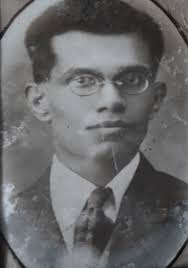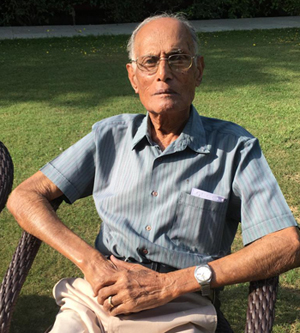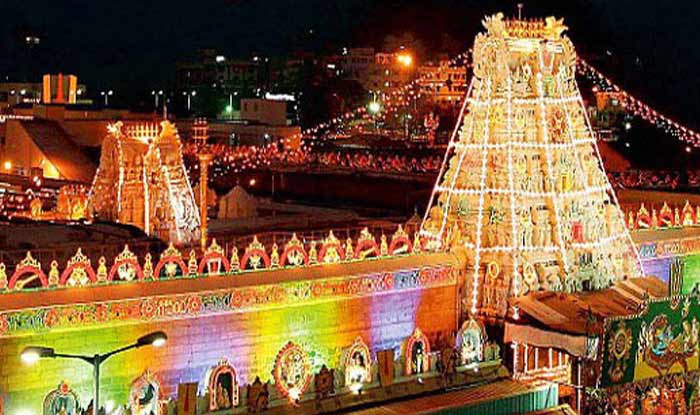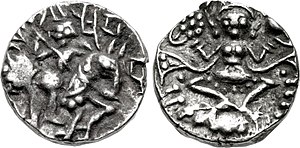He Was Involved in the Tibet Operation
Ayilam Subramania Panchapakesa Ayyar ( 1899-1963 ) was born at Ayilam,a Palakkad hamlet.K P K Menon has written a biography of him.He himself wrote his service story-Twenty five Years as a Civilian.He presided over both the sensational Laxmikanthan and the Alavandar murder cases.His son,former Foreign Secretary A P Venkateswaran has been identified as a Malayali.A S P Ayyar presided over the sensational Alavandar murder case.


Mullath Kadingi Vellodi (born 1896) is never mentioned in the list of Malayali chief ministers.He was the appointed Chief Minister of Hyderabad state by the government of India after the fall of the Hyderabad state ruled by Nizam rule.
A member of the Indian Civil Service, he was Textile Commissioner and ex-officio Joint Secretary in the Department of Industries and Civil Supplies during the British Raj. He was appointed a Companion of the Order of the Indian Empire (CIE) in the 1944 Birthday Honours list.He was a Senior Civil servant in the Government of India. He was from Kottakkal in Kerala.
As the appointed Chief Minister of the Hyderabad State in 1950-1952, he administered the state with the help of bureaucrats from Madras state and Bombay state.From April-August 1947 he was acting Indian High Commissioner to London. From 20 June 1958 to 6 December 1961 he was ambassador to Bern.


After Indian independence, Nair transferred to the newly organised Indian Foreign Service and was promoted to senior under-secretary by 1949.He was then posted to the Cairo embassy as first secretary, where he was appointed acting charge d'affaires on 19 April 1951.
Nair resides in New Delhi, together with his wife.
The last surviving member of the last ICS batch,Monishi Mohan Sen passed away on 23rd October 2019. He was close to 100 years old and was born on 14th December 1919. He belonged to the 1943 ICS batch, which was the last ICS batch ever recruited. This batch was fully recruited and trained in India, and had only Indian ICS officers as members.
IT was while researching on M Balachandra Koman,who was selected to the ICS in 1923,I stumbled upon V M M Nair,the last Malayali I C S officer.While Koman is an unsung hero,V M M Nair,who celebrated his 100th birth day last year ( 2019) is not a human interest story to any of the Malayalam dailies,which thrive in mediocrity.In 1987 when I searched for the surviving Malayali officers,I could find only K Balachandran in Bengaluru.I was told a Tamil Brahmin from North Parur had got into the ICS but died early as a drunkard.
Four Malayalis have become judges after getting into the Indian Civil Service.They are M C Balachandra Koman,A S P Ayyar,A L Fletcher and P T Raman Nair.While Raman Nair has been celebrated to an extent,Koman remains unsung.People from the backward communities seldom get recognition,since histories are written by the so called elites.Fletcher and A S P Ayyar have never been identified as Malayalis.Fletcher,1933 Punjab cader ICS,was only a district judge. AL Fletcher (Punjab, 1933) who had been the District Judge, Gujranwala (now in Pakistan) moved from the Judicial Branch of the ICS to the Executive, worked as Commissioner, Jalandhar Division and had a long stint as Financial Commissioner at Chandigarh.
Four Malayalis have become judges after getting into the Indian Civil Service.They are M C Balachandra Koman,A S P Ayyar,A L Fletcher and P T Raman Nair.While Raman Nair has been celebrated to an extent,Koman remains unsung.People from the backward communities seldom get recognition,since histories are written by the so called elites.Fletcher and A S P Ayyar have never been identified as Malayalis.Fletcher,1933 Punjab cader ICS,was only a district judge. AL Fletcher (Punjab, 1933) who had been the District Judge, Gujranwala (now in Pakistan) moved from the Judicial Branch of the ICS to the Executive, worked as Commissioner, Jalandhar Division and had a long stint as Financial Commissioner at Chandigarh.
 |
| V M M Nair |
It was Raman Nair,as Registrar,who led Koman to the dais for the swearing in as Judge of the Madras High Court in September,1945.Nair opted for Kerala after the states re organization and became a Judge in the Kerala High Court on 22 February,1957.Nair was the Commission that enquired the Andhra rice scandal during the first EMS government of 1957-1959.Koman enquired the 5.5 Lakh scandal against Panampilly Govinda Menon.
Koman was thus the first Malayali ICS judge in the Madras High Court;A S P Ayyar followed in 1950.Raman Nair was the only ICS judge in the Kerala High Court.M C B Koman was the son of Rao Bahadur Sir Dr M C Koman, Civil Surgeon, Madras General Hospital,and later Vice Principal,Madras Medical College.
Besides K.P.S. Menon (1921), Under
Secretary Ministry of External Affairs,A S P Ayyar, M.C.B. Koman (1923) alongwith N R Pillai,were the next Malayalis to achieve this coveted position, in the 1920s.Pillai became India's first cabinet secretary. K W P Marar,who got selected to the ICS in 1928,committed suicide,while he was Chairman of Cochin Port Trust.
Secretary Ministry of External Affairs,A S P Ayyar, M.C.B. Koman (1923) alongwith N R Pillai,were the next Malayalis to achieve this coveted position, in the 1920s.Pillai became India's first cabinet secretary. K W P Marar,who got selected to the ICS in 1928,committed suicide,while he was Chairman of Cochin Port Trust.
 |
| A L Fletcher |
Anthony Leocadia Fletcher, son of Peter Fletcher and Helen Fletcher, was born on 9 December 1909 in a Christian family of Kerala. He completed his school education from St. Joseph's Higher Secondary School, Trivandrum. He did his B.Sc. from University of Madras and M.Sc. from University of Nagpur. Then he went to School of Oriental Studies for further education and joined as Indian Civil Servant in London,in 1933.
S K Chettur,nephew of Sir C Sankaran Nair, studied at Oxford in 1929, joined ICS,became Collector of Palakkad in 1935,at and at the end became Chief Secretary of Madras.M K K Nayar,in his autobiography,Story of an Era Without Ill -will,has said that in the 1940s,only one Malayali, K Balachandran had passed the ICS.There was a compulsory Indian language paper;for Malayalam,marks were miserly.In 1942 M S Ram got first class marks for all subjects,except Malayalam.He got only 46 in Malayalam,making it to the 16 th rank-only three were selected then.If he had got 61,he would have topped.

S K Chettur
M K K Nair seems to have forgotten V M M Nair,who got into the ICS in 1942,alongwith Balachandran-Nair became Balachandran's brother in law.Nair belonged to an illustrious family, and his father Chettur Karunakaran Nair was a District Superintendent of Police in pre-independence Madras Presidency, an uncle Sir Chettur Madhavan Nair (a son-in-law of Sir Chettur Sankaran Nair) was a member of the Privy Council, another uncle Diwan Bahadur Chettur Govindar Nair was Law Secretary of Orissa before independence, and an uncle Chettur Krishnan Nair was Public Prosecutor in Madurai before independence.
K P S Menon was the only Malayali topper in the ICS exam.
The young K P S Menon
There is a widespread misconception that ICS was conferred upon Koman and he did not compete for the exam from London. This is gross misconception and error inadvertent. The question of conferment arose only after 1950 when Dominion India attained Republican status. Little did one realise that it was in fact M.K. Vellodi then working with Binny and Company in Madras was the one conferred with an ICS after 1950.Vellodi was conferred ICS,alongwith V Ramakrishna,T Bhaskara Rao Naidu and Mohammad Shahabudin at the instance of the Justice Party to counteract the alleged prominence of the Brahmins in superior services.
Mullath Kadingi Vellodi (born 1896) is never mentioned in the list of Malayali chief ministers.He was the appointed Chief Minister of Hyderabad state by the government of India after the fall of the Hyderabad state ruled by Nizam rule.
A member of the Indian Civil Service, he was Textile Commissioner and ex-officio Joint Secretary in the Department of Industries and Civil Supplies during the British Raj. He was appointed a Companion of the Order of the Indian Empire (CIE) in the 1944 Birthday Honours list.He was a Senior Civil servant in the Government of India. He was from Kottakkal in Kerala.
As the appointed Chief Minister of the Hyderabad State in 1950-1952, he administered the state with the help of bureaucrats from Madras state and Bombay state.From April-August 1947 he was acting Indian High Commissioner to London. From 20 June 1958 to 6 December 1961 he was ambassador to Bern.

M K Vellodi
The first state government in Kerala led by E. M. S. Namboodiripad was rocked by the infamous Rice Scandal that pertained to alleged corruption in the purchase of rice from Andhra Pradesh. T. O. Bava of the Congress raised the allegation that the purchase made without floating tenders caused a loss of Rs 16.50 lakh to the exchequer. K. C. George was the then food minister. A probe was ordered under the Commission of Inquires Act, 1952 and Justice P. T. Raman Nair was the inquiry commission. Though the commission’s report confirmed the monetary loss, it also suggested that no one in the ministry made any personal gains. The government tabled the report in the Assembly, but with a dissent note and rejected the demand for K. C. George’s resignation.
 |
| A S P Ayyar |
V M M Nair or Vallilath Madathil Madhavan Nair ( born 8 October 1919 ) is the last serving ICS officer when he celebrated his 100 th birth anniversary in 2019.He was educated at Brasenose College, Oxford and at Gonville and Caius College, Cambridge. In July 1942, he was selected for the second-to-last batch of the Indian Civil Service, both the smallest-ever batch of the ICS and the last for which direct nominations were made by the India Office in London. He was subsequently posted to Bihar Province as an assistant collector and magistrate. In 1946, he transferred to the Foreign and Political Department (the Indian Political Service.He retired in 1977 as India's ambassador to Spain.
As a deputy secretary, Nair and his colleagues in the Department of External Affairs were involved in a British initiative to supply arms to Tibet.With Indian independence imminent, the British government determined to maintain a certain level of influence in the largely autonomous state and gain some leverage over the Chinese government, even to the extent of arming "peace-loving monks". In February 1946, British political agents encouraged Tibet to purchase Rs 3,82,162 (£28,662, equivalent to £1,197,662 in 2019 ) worth of weapons. The suggested purchases, intended to equip a brigade-level force, included 2- and 3-inch mortars, Bren and Sten guns, rifles and Verey pistols. Though this shipment was delivered to Lhasa in May 1947, some difficulties remained over approvals for ammunition. On 5 August 1947, Nair observed any disturbances in Tibet would have geopolitical consequences in areas bordering both India and Pakistan. He suggested both governments send Tibet ammunition from their joint supply ahead of partition. This was done, and the ammunition arrived in Tibet in January 1948.

K W P Marar
After Indian independence, Nair transferred to the newly organised Indian Foreign Service and was promoted to senior under-secretary by 1949.He was then posted to the Cairo embassy as first secretary, where he was appointed acting charge d'affaires on 19 April 1951.
Nair served in and headed India’s missions for over two decades in Egypt, Sri Lanka, Singapore, Malaysia, Cambodia, Norway, Poland, Morocco (accredited to Tunisia as well), and Spain.
The 1942 ICS batch is unique, as it was the last ICS batch recruited in UK. It was the smallest UK batch of the ICS ever recruited. It had only 2 recruits from the UK, both Indian candidates, and no UK (European) members.
There were other 1942 ICS members recruited in India, such as the late Mr. K. Balachandran ICS (Assam), a former Secretary to the President of India, Nair’s brother-in-law.
Nair was one of two such UK recruits, and the other recruit Mr. Chandra Prakash Gupta, ICS (UP) quit the ICS prematurely in the late 1960s after having been the Establishment Officer to the Government of India.
A unique coincidence is that both Mr. Nair and Gupta were born on the same day. Nothing is known about Mr. Gupta, though his birth centenary is approaching as well.
Nair, MA (Madras), MA (Oxon.), MA (Cantab.), Bar-at-Law, is one of very few Indians to have belonged to three superior services: ICS, pre-1947 IPS (Political) & post-1947 IFS (Foreign).
The 1942 ICS batch is unique, as it was the last ICS batch recruited in UK. It was the smallest UK batch of the ICS ever recruited. It had only 2 recruits from the UK, both Indian candidates, and no UK (European) members.
There were other 1942 ICS members recruited in India, such as the late Mr. K. Balachandran ICS (Assam), a former Secretary to the President of India, Nair’s brother-in-law.
Nair was one of two such UK recruits, and the other recruit Mr. Chandra Prakash Gupta, ICS (UP) quit the ICS prematurely in the late 1960s after having been the Establishment Officer to the Government of India.
A unique coincidence is that both Mr. Nair and Gupta were born on the same day. Nothing is known about Mr. Gupta, though his birth centenary is approaching as well.
Nair, MA (Madras), MA (Oxon.), MA (Cantab.), Bar-at-Law, is one of very few Indians to have belonged to three superior services: ICS, pre-1947 IPS (Political) & post-1947 IFS (Foreign).
Nair resides in New Delhi, together with his wife.
 |
| Last ICS Batch-Standing first left Aga Shahi,Third from left AGN Kazi,Seated third from right Sir Theodore Tasker |
Over the course of his career, Nair held the following appointments:
Deputy Secretary, Ministry of External Affairs (24 August 1953)
Deputy High Commissioner of India to Ceylon (12 August 1955)
Acting High Commissioner of India to Ceylon (6 October 1956 to 8 April 1957)
Commissioner of India to Singapore and the Federation of Malaya (2 May 1957)
High Commissioner of India to the Federation of Malaya and Commissioner of India to Singapore (12 September 1957 to 20 June 1958)[13][14]
Ambassador of India to Cambodia (relinquished 3 August 1960)
Ambassador of India to Norway (10 December 1960)
Ambassador of India to Poland (24 June 1967)
Ambassador of India to Morocco (15 January 1971)
Ambassador of India to Spain (13 February 1975-1977 )
Acting High Commissioner of India to Ceylon (6 October 1956 to 8 April 1957)
Commissioner of India to Singapore and the Federation of Malaya (2 May 1957)
High Commissioner of India to the Federation of Malaya and Commissioner of India to Singapore (12 September 1957 to 20 June 1958)[13][14]
Ambassador of India to Cambodia (relinquished 3 August 1960)
Ambassador of India to Norway (10 December 1960)
Ambassador of India to Poland (24 June 1967)
Ambassador of India to Morocco (15 January 1971)
Ambassador of India to Spain (13 February 1975-1977 )
 |
| Monishi Mohan Sen |
Some other well-known members of the 1943 ICS batch were N. K. Mukharji, last ICS Cabinet Secretary and Agha Shahi, former Foreign Minister of Pakistan.
Sen belonged to the Bengal/West Bengal cadre and from the late 1950s spent his time in Delhi where he was Joint Secretary in the Ministry of Defence, for over a decade, in both Defence and Defence Production departments, the Chief Controller of Imports and Exports, and the Secretary of the Department of Defence Production till his retirement. After his retirement, he chaired the commission developing plans and building the second bridge over the Hooghly river in Kolkata.
Sen belonged to a distinguished Brahmo family of Calcutta. His father Bhupati Mohan Sen was a Cambridge graduate, and a member of the Indian Educational Service (IES), who became the first Indian principal of Presidency College, Calcutta, a post he held for 12 years.
The late Principal B M. Sen, who had received the Padma Bhushan, lived long enough to see not only his son join the ICS but also be one of the last members to retire from the ICS after having been a Secretary to the Government of India.
With Sen's departure,only one ICS officer in the world is alive, and that is V. M. M Nair.
The first Indian ICS officer was also a Bengali-Satyendranath Tagore,in 1864.He was the second eldest brother of Rabindranath Tagore.P Rajagopalachari,who was dewan in Cochin and Tavancore,belonged to the 1888 ICS batch.Albion Rajkumar Banerjee,Kochi Dewan in whose name Banerjee Road is still there,belonged to the 1895 batch.
Finally,I assume that there was no Tamil Brahmin in the ICS from North Parur or Chendamangalam.In the list of ICS officers in the 1920s, Nilakanta Mahadeva Iyer is there in the 1922 batch and S Venkateswaran in the 1925 batch.Nilakantan was from Nagercoil and Venkateswaran from Tirunelveli.
© Ramachandran











